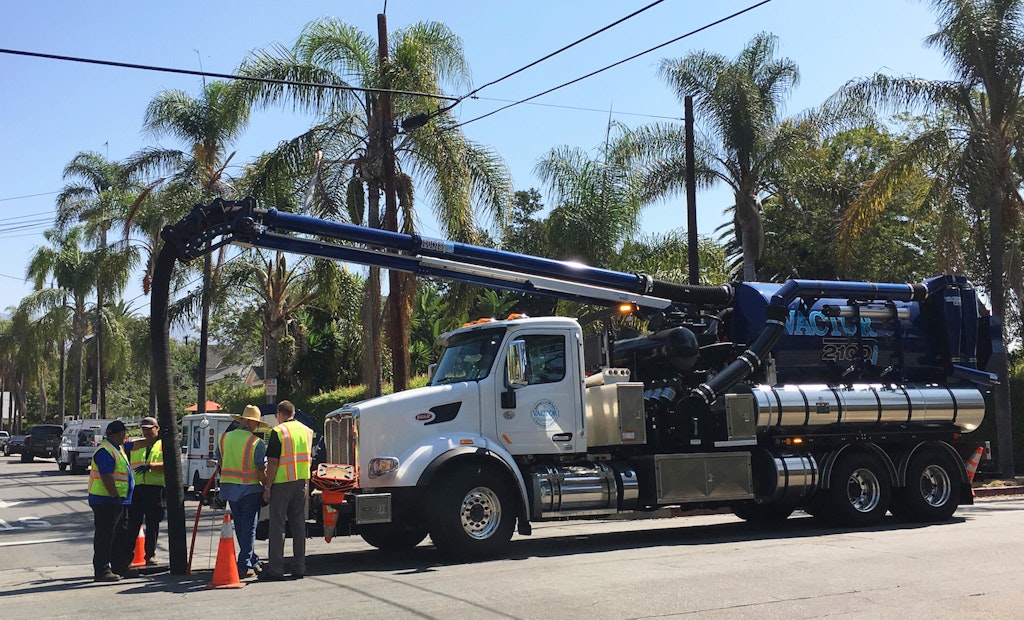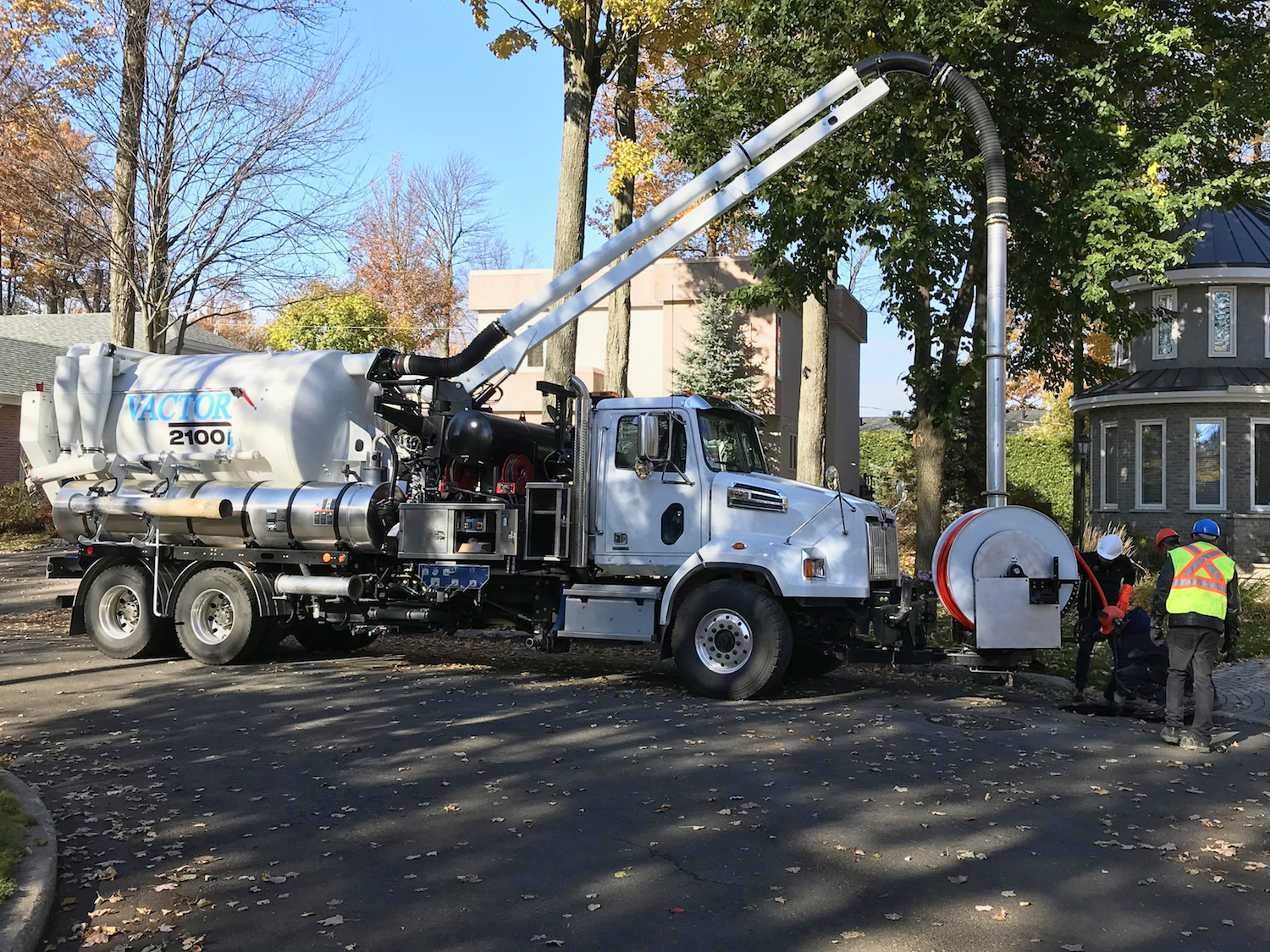Interested in Trucks?
Get Trucks articles, news and videos right in your inbox! Sign up now.
Trucks + Get AlertsProper operation and maintenance of your combination sewer cleaner is critical to protect the safety of operators and others, and to maximize performance and equipment life. Your operator and service personnel should be fully trained in proper operating procedures before operating or maintaining the unit.
Overhead accidents cause severe injuries, fatalities and property damage every year. Preventing these incidents requires operators to recognize certain hazards that occur on the job and to follow proper safety procedures to avoid them.
Overhead power line safety should be part of your overall safety and health program and training. A potential electrical shock hazard exists with the operation of mobile equipment near high voltage power lines. Follow all OSHA and site rules and regulations. For combination sewer cleaners, this includes radio antennas, booms and masts, and load heights.
An important first step is to wear protective gear, such as insulated hard hats, gloves, boots and clothing.
The 10 feet rule
Always survey the work site for overhead power lines. A general rule of thumb is to keep yourself and any conductive object at least 10 feet away from an overhead power line. Consider all overhead power lines, wires and other conductors as energized — even if they are down or appear to be insulated — until or unless the electric utility indicates otherwise, or an electrician verifies that the line is not energized and has been grounded.
If overhead lines are present, call the utility company and find out what voltage is on the lines. Ask if the utility company can shut off the lines while you are working near them. If overhead lines cannot be shut down, ask the utility company if they can install insulation over the lines during the time you will be working near them.
When operating a sewer cleaner near lines rated at 50,000 volts or less, you must keep a minimum distance of 10 feet between the energized lines and any part of the truck (boom, load line, etc.). When using your sewer cleaner’s boom near energized lines rated at more than 50,000 volts, the minimum distance between the energized lines and any part of the boom must be at least 10 feet, plus 0.4 inches for each 1,000 volts over 50,000 volts.
Boom safety
To prevent death, injury or equipment damage, always be aware of the sewer cleaner's surroundings before operating any of the boom functions. Check for overhead wires and obstructions before raising or moving the boom on your sewer cleaner. Never leave the boom raised while the sewer cleaner is unattended.
Do not move the sewer cleaner unless the boom is in the proper travel mode. Never allow the boom to contact the truck or any obstruction in the area.
Safety is a team effort
Where it is difficult for the operator to visually maintain the desired clearance, another team member should be nearby to observe the distance between the boom and the line to provide timely warning to the operator. When this hazardous overhead condition is present on the job, this team member’s sole purpose is to monitor this distance without any other distractions.
Dumping safety
Never dump under power lines. End dumps with raised beds will violate the 10 feet rule. Dump the load to the side and let a dozer push it into place. Contact the local electrical utilities for identification of the power rating and proper procedures for working near the lines.
High-voltage power lines
Some exceptions are permitted for travel under or work near a power line only if:
- The electrical department is notified for a qualified electrical person to de-energize the power line and implement their Tag-Lock-Try procedures
- An electrician properly grounds the mobile equipment
Emergency stop
In the event of an emergency, the sewer cleaner’s vacuum and water must be stopped immediately. To shut down the system, stop vacuuming, activate the vacuum relief valves, reduce engine/blower/fan RPM, and, if required, shut down the engine.
Properly trained equipment operators and maintenance personnel know how to get the most out of their sewer cleaning equipment and can get work done quickly without compromising quality. As a leading manufacturer of sewer and catch basin cleaners, Vactor Manufacturing is doing its part to support the industry through enhanced education and training for customers.







